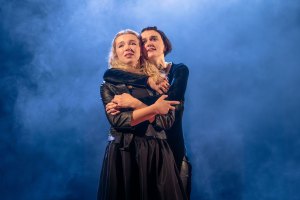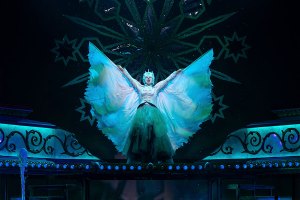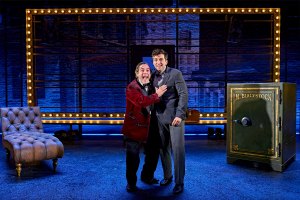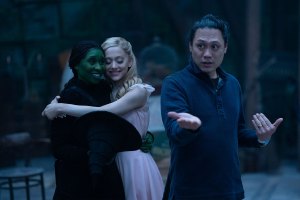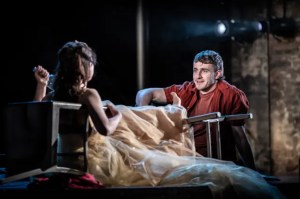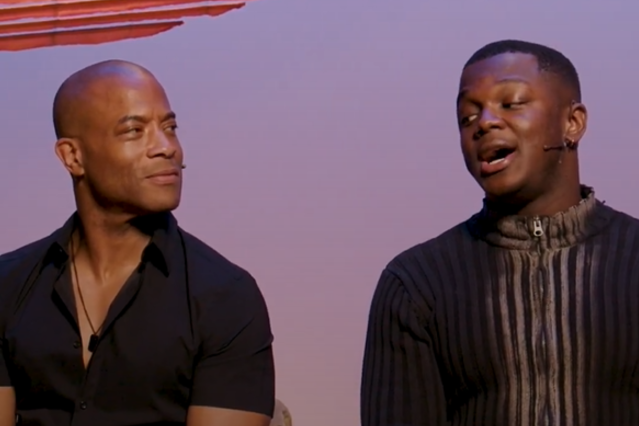The Girls of Slender Means at the Royal Lyceum Theatre in Edinburgh – review
Gabriel Quigley’s stage adaptation of Muriel Spark’s novella runs until 4 May
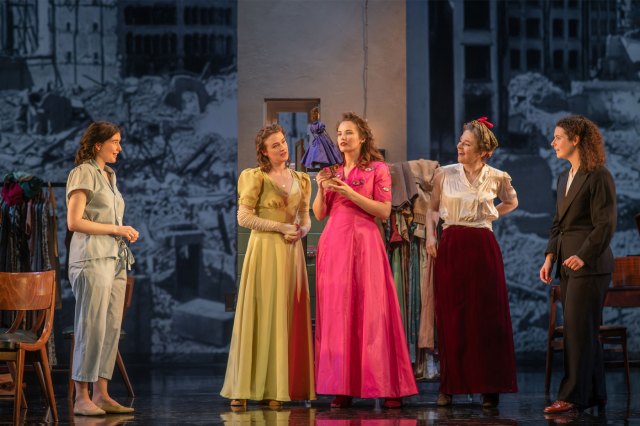
Watching the opening scenes of The Girls of Slender Means feels like stepping into a lost world. It’s 1945, between VE day and VJ day, in the May of Teck Boarding House in London; an institution set up to provide for “girls of slender means” who need somewhere to live while working in the city. The story focuses on five of the girls who share a dorm and are nearing the upper age limit of 25, by which point they need to find other accommodation. By day they work as secretaries in various institutions, but they entertain dreams of glamour while harbouring secrets and hiding traumas.
Gabriel Quigley’s script does a smart job of adapting the source material, the 1963 novella by Muriel Spark. There are flashes between 1945 and 1963 that retain some of the book’s fragmented narrative structure but, more importantly, Quigley draws the characters of all five girls very carefully so that they’re all distinctive and individual. She’s also very good at evoking the sense of a lost time and place, with girls speaking in clipped English and practising their deportment while dreaming about boyfriends and complaining about rationing.
However, there are some prickly elements that feel awkward, and it’s difficult to know whether they’re Quigley’s fault or Sparks’. For one thing, there’s a stark tonal shift between the two acts, which feels very jarring. The first act has a light-hearted tone that speaks of youth and optimism, but the second dips into far darker territory that considers, among other things, the horror of Nazi atrocities in Europe. That comes almost out of nowhere and isn’t the plausible explanation for the characters’ behaviour that we’re asked to believe it is. Worse, there’s a massive Chekhov’s gun in the first act that goes off very clumsily towards the end of the second. It doesn’t so much drive the narrative as take it over, so that the play’s coda feels like it’s dusting itself down after the shock.
It’s watchable mostly because of the performances, all of which are very strong. Molly Vevers leads the pack as Jane, a frustrated poet who has no luck with men, and she is contrasted neatly with the glamorous Selina (Julia Brown) or the quietly delusional Pauline (Shannon Watson), alongside Amy Kennedy’s ‘jolly hockeysticks’ Amy and the saintly Joanna (Molly McGrath). Seamus Dillane plays Nicholas Farringdon, the adaptation’s only male character, on a fine line between a roguish rat and a misunderstood poet.
Roxana Silbert’s economical direction helps too, doing a lot through limited (slender?) means, such as by using mannequins to double up as dance partners in a nightclub. Jessica Worrall’s designs deserve a mention, both for evoking the period and for using the costumes to extend the girls’ characters. This is a show where the fancy frocks look as good as the frumpy cardigans and, in this context, that’s meant as a compliment.


